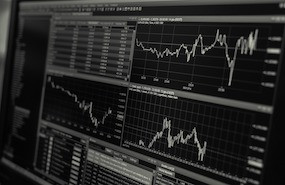Developments in financial markets - June 2021
Written and accurate as at: Jul 14, 2021 Current Stats & Facts

Australian shares
June saw another month of strong returns for the Australian Share market, continuing the strong rally of CY 2021 and regaining losses caused by the pandemic. The ASX300 Accumulation returned +2.25%, while the ASX Small Ordinaries Accumulation gained +3.08% over the month. The one year returns on these respective indices is +28.49% and +33.23%. The market was led by strong performance in the Information Technology sector which ended the month up (+11.32%). The Utilities and Consumer Discretionary sectors also did well, ending up (+3.14%) and (+4.20%), respectively. The Financials sector struggled over the month, ending down (-0.74%).
International shares
Despite building inflationary pressures, global markets mostly increased over June. Tech mega caps lifted during the month with Microsoft up (+2.8%) and Apple up (+1.2%). Despite a sharp fall in the US after the FED’s mid-month meeting which signalled two potential interest rate hikes in 2023, reversals at the end of the month returned US markets into positive territory. End of month saw a mixed bag in global share markets, affected by end-of-month and end-of-quarter squaring, compounding with concerns mounting around increased COVID-19 infections attributable to the rising Delta variant.
The MSCI World ex Australia Unhedged index ended the month up +4.71%. The S&P ended the month up +2.33%, the NASDAQ finished up +5.55%, as did Dow Jones up just 0.02%. The respective 1 year returns on the three US markets are +40.79%, +45.23% and +36.34%. European shares were similar, the Euro STOXX up +1.36%. France’s CAC 40 and Germany’s DAX Index ended up +0.94% and +0.71%, respectively. With the 1 year returns on these respective markets being +25.67%, +31.84% and +26.16%.
Asian share markets saw a mix of returns over June. Japan’s Nikkei saw a conservative dip, ending -0.08% return over the month, with 1 year returns of +31.26%. China’s Shanghai Composite finished the month down -0.67% and the Hang Seng was down -1.11%. The Korean KOSPI increased from May, ending up +2.90%, bringing its one-year return to +56.36%.
Fixed interest
Over June, the 10-year US Treasury yield increased by eight basis points to 1.52%, whilst the US FED left its target range for the federal funds rate unchanged at 0-0.25%. Across the pond and the Bank of England kept its monetary policy stable at 0.1%, with the RBA keeping its cash rate and three-year government bond target intact at 0.10% at its June 1 meeting. Despite this, doubt is cast upon the RBA’s assertion that it will wait until 2024 to raise the cash rate; this comes after data released during the month showed Australian jobs surged in May and unemployment fell to pre-COVID-19 levels.
The Bloomberg AusBond Composite (0+Y) index ending up +0.69% up from +0.27% in May. For international fixed interest markets, the Barclays Global Aggregate TR Hedged index’s one-month number closed at +0.49%. The 10-year Treasury bond yields in Australia finishing the month at +1.51%, while the US ended at +1.47%.
Currencies
The end of the financial year saw the AUD slip below 75 US cents, down by -3.05% from May, ending the month at 0.7498. With the market focused on labour market performance and US monetary policy, the AUD remains vulnerable in the near term, with an extended break below 0.75 looking likely. Additionally, the Euro is also down from April at -3.02% against the USD, ending May at 1.1858. Moreover, the GBP ended down -2.38% to 1.3831.
The People’s Bank of China took steps to restrict the Yuan’s appreciation by increasing the reserve ratio required for banks’ foreign-currency deposits from June 15. This decision underlines the authorities’ determination to stabilise currency. The change caused offshore Yuan to weaken slightly.
Commodities
Key major commodities had another strong month as economies around the world continue to reopen. The short-term supply impact of the shut down to the colonial pipeline in May cleared through the system. As the US enter into the warmer months, we do expect to see a higher demand for oil (petrol) as we see a return to the summer driving season. Oil increased in May with Brent Crude oil finishing the month at +8.38% to US$75.13 while WTI Oil performed even better, up +10.78% to US$73.47. The potential for sanctions to be lifted against Iran could see more oil flow into the global supply, which may create downward price pressure.
Iron Ore also continued its upward trajectory of the last 12 months, ending the month up +5.01% to US$210.98. Iron ore is now up +115.26% over the last 12 months. Gold fell, ending the month down -7.17% to US $1770.11. The Bloomberg Commodity Index reported a gain of +1.85% up to 94.5412.










